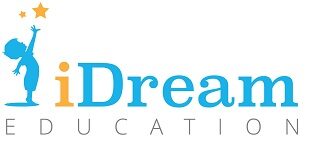Why the Singapore method?

Quite simply because the students of this country are the best in the world in mathematics. The Singapore method is a complete mathematics method for primary school, inspired by books designed by the Singapore Ministry of Education. The international study TIMSS (Trends in International Mathematics and Sciences Studies), which is based on tests carried out every 4 years among pupils of CM1 and 4 ème from more than 50 countries, classifies the pupils of Singapore in the first global place. ( http://timss.bc.edu ) Although this method has existed since 1982, it was only from the 2000s that it began to be known internationally. It is now used in many countries and has proven its effectiveness everywhere.
What is the Singapore method?
The method is based on an explicit method: the concepts are explained clearly and briefly, then immediately applied in the resolution of many problems. By solving a wide variety of different problems, students are encouraged to gain an in-depth understanding of mathematical approaches. Find out more about explicit pedagogy: http://fr.wikipedia.org/wiki/Pédagogie_explicite
What is the “concrete-pictorial-abstract” approach?
The main challenge of teaching mathematics in primary school is to help pupils move from the concrete world that is familiar to them to an abstract vision, that is to say one determined by immutable rules, laws and principles. For example, students can very quickly know how to count three erasers by manipulating them. Here is the approach of the Singapore method:
1) Pupils are first confronted with mathematical notions by manipulating objects . (For example, they will learn addition by manipulating cubes or counters). This is the concrete step.
2) Then the objects are replaced by images that represent them. So a stack of ten cubes represents the number ten, then a dime, and so on. This is the pictorial step.
3) Finally, when the students have become familiar with the concepts of the lesson, they only work with numbers and symbols . This is the abstract step.
Why are students encouraged to “draw models”?
Concretely, they will draw bars of different lengths in order to determine which quantities are given in the statement, which quantities are unknown, and which operations will help them find the solution. For example, below:
It is not only an effective method for solving the most complex problems (in particular proportionality) but also an excellent introduction to algebra. Being able to visually represent abstract concepts is indeed the secret of success in algebra, and the fact of having learned it from primary school will be a decisive help throughout secondary education.
To take another example of “modelling”, pupils are invited from first grade to represent each number as a whole made up of two parts. This is called “number marriage” and it helps to understand that addition and subtraction are two facets of the same operation. For example, below:
These diagrams make it possible to make the transition between the representation by figures of quantities (“parts in the whole”) and operational writing.
Why is the method so effective?
Because it is progressive and leaves nothing to chance. Each concept is taught in great detail, and applied until complete understanding and mastery. The wide variety of problems encourages students to leave aside the superficial aspect (is it a question of measuring the area of a table, of a football field, of a notebook…) and to focus on the deep structure (all three cases involve calculating the area of a rectangle). The method therefore trains students to think like real mathematicians.
Why are students asked to learn the four operations from first grade? Isn’t it too difficult for them?
The Singapore method proceeds by “small touches”: each concept is first presented then, the following year, deepened, and so on. For example, division is taught from CP but in a very simple way, on numbers less than 20. The symbol ÷ is only introduced in CE1, and divisions with remainder in CE2. The fact of introducing concepts in a very simple way and then reviewing them in depth the following year allows students to familiarize themselves with them and therefore not to have apprehension when a new concept is taught. This “spiral” approach (that is to say, which starts from the simplest elements to gradually make them more complex) makes it possible to lay solid foundations, which are constantly revised before being deepened.
Does the Singapore method comply with official curricula?
The new edition of the Singapore CP method has been adapted to National Education programs. It includes: – the entire program in geometry; – a reasoned progression in mental arithmetic; – “I observe” boxes for active discovery of the notions that will be studied; – different levels of difficulty to meet the heterogeneity of your class. To learn more, click here .
What is the difference in format between new and old edition?
Yes, it is absolutely necessary. The student files contain exercises, but which are part of the lesson and which are done in class, with the help of the teacher. Workbooks or photocopiable files contain exercises that students must do individually, on the table or at home.
Why aren’t the solutions to the exercises in the student files?
Quite simply to prevent students from looking at them! All the answers can be found in the pedagogical guides, which detail, for each session, the pedagogical approach and the objectives, and also offer many additional activities to do in class.






